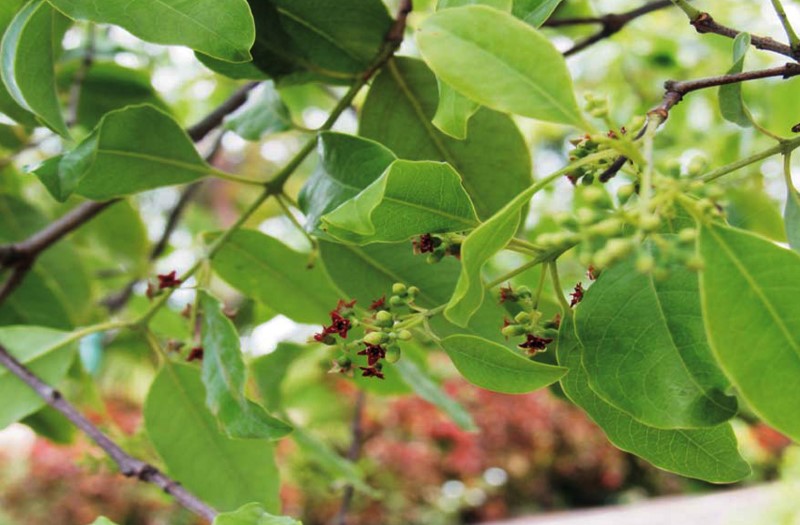Digital Garden
Trees of SN College Chempazhanthy:
Santalum album L.
ചന്ദനം
| Synonym: | Sirium myrtifolium L. |
| Family | Santalaceae |
| Local Names: | Chandanam, Sandal tree, White sandal tree |
 |
|
Flowering and fruiting: November – December Distribution: Peninsular India and Malaysia Habitat: Dry deciduous forests, also grown in homesteads Uses: Essential oil yielding, cosmetics production, timber yielding. Sandalwood oil has been widely used in folk medicine for treatment of common colds, bronchitis, skin disorders, heart ailments, general weakness, fever, infection of the urinary tract, inflammation of the mouth and pharynx, liver and gallbladder complaints and other maladies. In traditional Chinese medicine, sandalwood oil is considered an excellent sedating agent. Key Characters: Sandal plants are evergreen trees, bark surface dark grey to nearly black. Leaves simple, opposite, elliptic, apex acute, margin entire. Flowers bisexual, reddish-purple, in axillary and terminal paniculate cymes. Tepals 5, ovate, thin, fleshy. Stamens 5, alternates with disc. Ovary superior later half inferior at the time of flowering, 1-celled, ovules 2-3, pendulous, stigma 3 lobed. Fruit a drupe, globose, blackish-purple; seed one. |
|